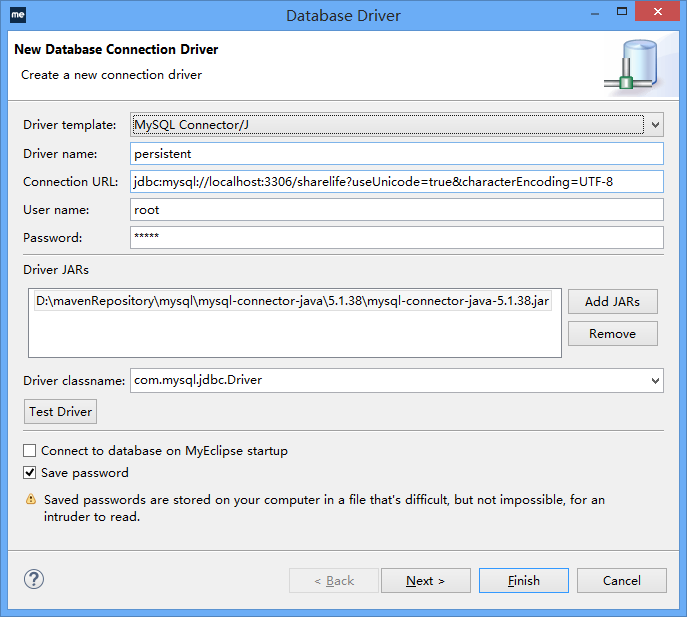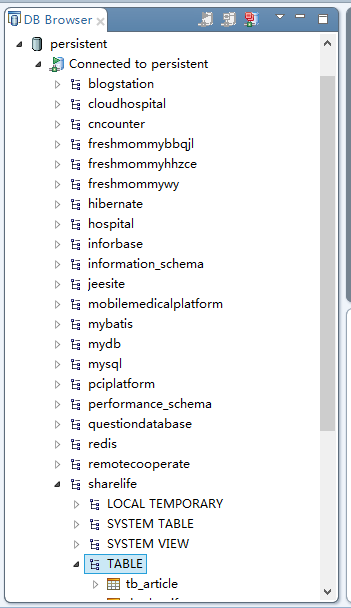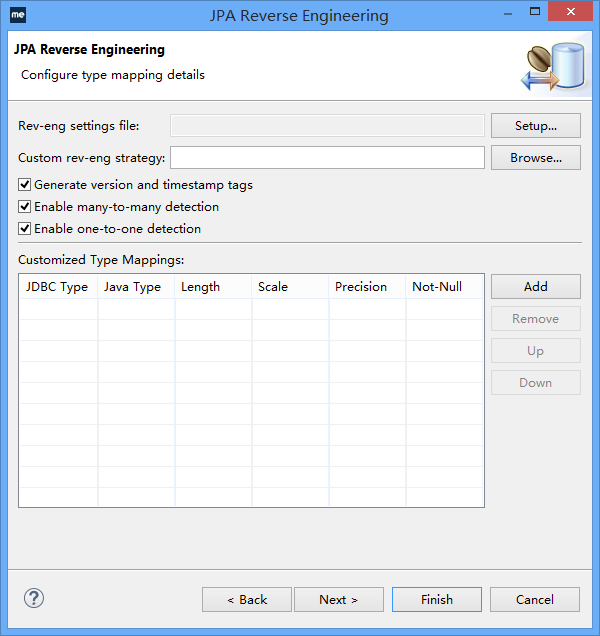myeclipse enterprise workbench版本号2015 Stable 2.0在windows平台的安装及使用。
安装
- 工具:
myeclipse-2015-stable-2.0-offline-installer-windows.exe 版本号2015 Stable 2.0、myeclipse-2015-stable-2.0 破解工具.zip - 双击运行myeclipse安装包,选择
Next I accept the terms...,Choose Installation Location中可以修改安装路径,根据电脑系统选择合适版本- 取消勾选
Launch MyEclipse 2015,点击Finish - 解压
myeclipse-2015-stable-2.0 破解工具.zip,双击\myeclipse2015_keygen\crack.bat Usercode:中随意填入,右侧选择BLUE,单击SystemId...两次生成SystemId后单击Active激活- Tools菜单中选择
save保存信息,关闭破解工具 - 把
\patch-补丁包\plugins\下的文件复制到myeclipse安装路径\plugins\下,覆盖相关文件 - 删除myeclipse安装路径
\plugins\com.genuitec.eclipse.mobile.phonegap.core_13.0.0.me201504281437下的PhonegapProjectManagerImpl$1.class、PhonegapProjectManagerImpl$2.class,每个文件在文件夹中搜索后可以得到两个同名文件,一共删除四个文件 - 最后,在myeclipse
MyEclipse菜单下选择Subscription Information...查看激活信息
生成Persistent Object
- myeclipse中新建
JPA Project,如下图所示

- 在Window菜单中选择
Open Perspective,选择MyEclipse Database Explorer - 右键
New,选择Driver template,填入Driver name、Connection URL、User name、Password,在Add JARs中添加mysql-connector-java-5.1.38.jar,并选择适宜的Driver classname,如下图所示

- 单击Test Driver,提示如下

- 找到要生成Persistent Object的数据库,如下图所示

- 选中要生成Persistent Object的表,按住Ctrl键可以同时选择多个表,右键选择
JPA Reverse Engineering...


- 最后选择
Finish,生成的一个Persistent Object如下所示
TbUser.java
package com.persistent;
import java.sql.Timestamp;
import java.util.HashSet;
import java.util.Set;
import javax.persistence.CascadeType;
import javax.persistence.Column;
import javax.persistence.Entity;
import javax.persistence.FetchType;
import javax.persistence.GeneratedValue;
import static javax.persistence.GenerationType.IDENTITY;
import javax.persistence.Id;
import javax.persistence.OneToMany;
import javax.persistence.Table;
import javax.persistence.Version;
/**
* TbUser entity. @author MyEclipse Persistence Tools
*/
@Entity
@Table(name = "tb_user", catalog = "sharelife")
public class TbUser implements java.io.Serializable {
// Fields
private Integer userid;
private Integer version;
private String email;
private String username;
private String password;
private String passwordsalt;
private String userphone;
private Timestamp createtime;
private Timestamp updatetime;
private Set<TbArticle> tbArticles = new HashSet<TbArticle>(0);
private Set<TbClassify> tbClassifies = new HashSet<TbClassify>(0);
// Constructors
/** default constructor */
public TbUser() {
}
/** minimal constructor */
public TbUser(String email, String username, String password,
String passwordsalt, Timestamp createtime) {
this.email = email;
this.username = username;
this.password = password;
this.passwordsalt = passwordsalt;
this.createtime = createtime;
}
/** full constructor */
public TbUser(String email, String username, String password,
String passwordsalt, String userphone, Timestamp createtime,
Timestamp updatetime, Set<TbArticle> tbArticles,
Set<TbClassify> tbClassifies) {
this.email = email;
this.username = username;
this.password = password;
this.passwordsalt = passwordsalt;
this.userphone = userphone;
this.createtime = createtime;
this.updatetime = updatetime;
this.tbArticles = tbArticles;
this.tbClassifies = tbClassifies;
}
// Property accessors
@Id
@GeneratedValue(strategy = IDENTITY)
@Column(name = "userid", unique = true, nullable = false)
public Integer getUserid() {
return this.userid;
}
public void setUserid(Integer userid) {
this.userid = userid;
}
@Version
@Column(name = "version", nullable = false)
public Integer getVersion() {
return this.version;
}
public void setVersion(Integer version) {
this.version = version;
}
@Column(name = "email", nullable = false, length = 50)
public String getEmail() {
return this.email;
}
public void setEmail(String email) {
this.email = email;
}
@Column(name = "username", nullable = false, length = 50)
public String getUsername() {
return this.username;
}
public void setUsername(String username) {
this.username = username;
}
@Column(name = "password", nullable = false, length = 100)
public String getPassword() {
return this.password;
}
public void setPassword(String password) {
this.password = password;
}
@Column(name = "passwordsalt", nullable = false, length = 50)
public String getPasswordsalt() {
return this.passwordsalt;
}
public void setPasswordsalt(String passwordsalt) {
this.passwordsalt = passwordsalt;
}
@Column(name = "userphone", length = 20)
public String getUserphone() {
return this.userphone;
}
public void setUserphone(String userphone) {
this.userphone = userphone;
}
@Column(name = "createtime", nullable = false, length = 19)
public Timestamp getCreatetime() {
return this.createtime;
}
public void setCreatetime(Timestamp createtime) {
this.createtime = createtime;
}
@Column(name = "updatetime", length = 19)
public Timestamp getUpdatetime() {
return this.updatetime;
}
public void setUpdatetime(Timestamp updatetime) {
this.updatetime = updatetime;
}
@OneToMany(cascade = CascadeType.ALL, fetch = FetchType.LAZY, mappedBy = "tbUser")
public Set<TbArticle> getTbArticles() {
return this.tbArticles;
}
public void setTbArticles(Set<TbArticle> tbArticles) {
this.tbArticles = tbArticles;
}
@OneToMany(cascade = CascadeType.ALL, fetch = FetchType.LAZY, mappedBy = "tbUser")
public Set<TbClassify> getTbClassifies() {
return this.tbClassifies;
}
public void setTbClassifies(Set<TbClassify> tbClassifies) {
this.tbClassifies = tbClassifies;
}
}